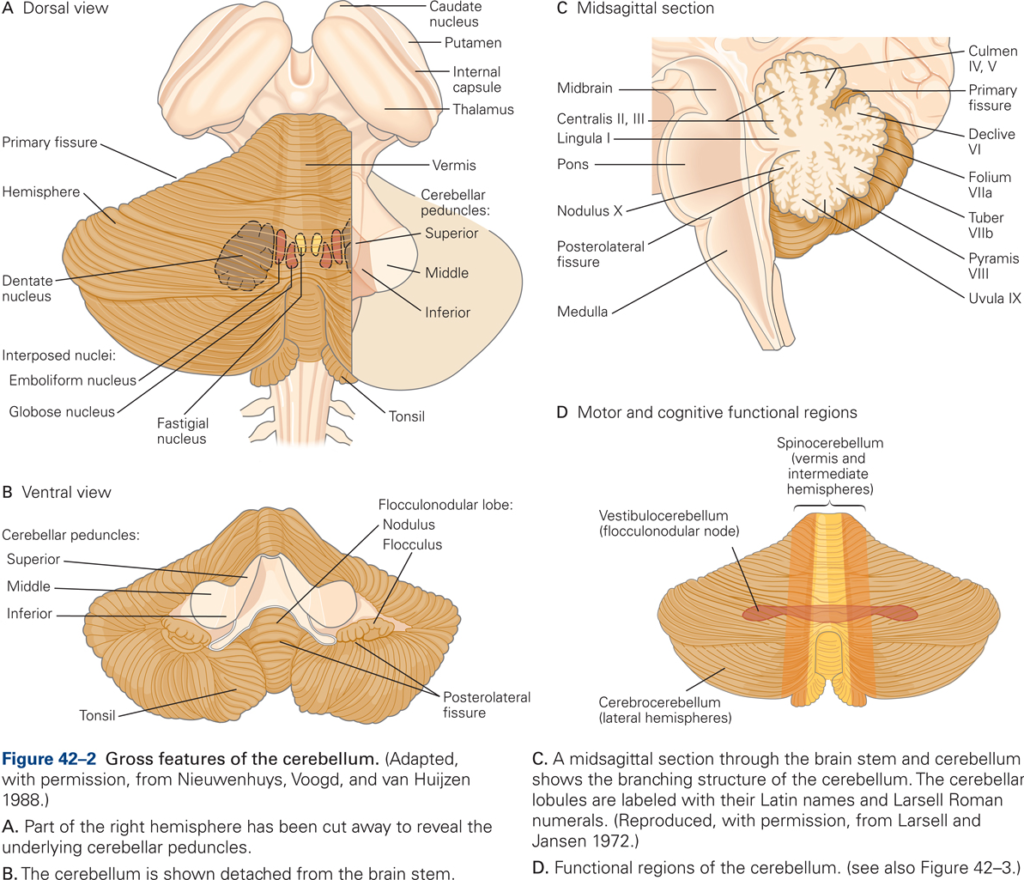M6 | Integrative action of the sensorimotor system – Cerebellum & Basal ganglia
Gross Anatomy of the Cerebellum
The cerebellum (CB) connects the higher levels of the motor control hierarchy with intermediate and lower levels. The CB is important for the integration of sensory with motor signals – it receives input from all sensory systems and its outputs target all structures involved in the generation of movement.
Gross anatomy
The cerebellum consist of cerebellar cortex (CBX) and deep cerebellar nuclei (DCN). The cerebellar cortex is convoluted into many folia. Three major transverse divisions – lobes – are recognized. The anterior lobe is most rostral, the posterior lobe and flocculo-nodular lobe are located more caudally. These lobes are divided by the primary fissure and the posterolateral fissure, respectively.
Independent of the transverse, lobular arrangement, three major sagittal divisions are recognized. The central longitudinal strip of cortex is the vermis. On each side, the vermis is divided from the lateral cerebellar hemispheres by the narrow pars intermedia. In humans, the hemispheres are so highly developed that they obscure pars intermedia and much of the vermis.

All input to and output from the cerebellum are via three peduncles on each side. All output from the cerebellum, via the deep nuclei, is through the superior cerebellar peduncle (brachium conjunctiva). The middle cerebellar peduncle (brachium pontis) is exclusively input from the pontine nuclei. The inferior cerebellar peduncle (restiform body) contains exclusively inputs from the spinal cord and brainstem including, in particular, the inferior olive.
References
- Voogd, J., & Glickstein, M. (1998). The anatomy of the cerebellum. Trends in Neurosciences., 21(9), 370-375. [PDF]
- Glickstein, M. (2000). How are visual areas of the brain connected to motor areas for the sensory guidance of movement? Trends in Neurosciences., 23(12), 613-617. [PDF]
- Glickstein, M. (2007). What does the cerebellum really do? Current Biology, 17(19), R824-827. [PDF]

